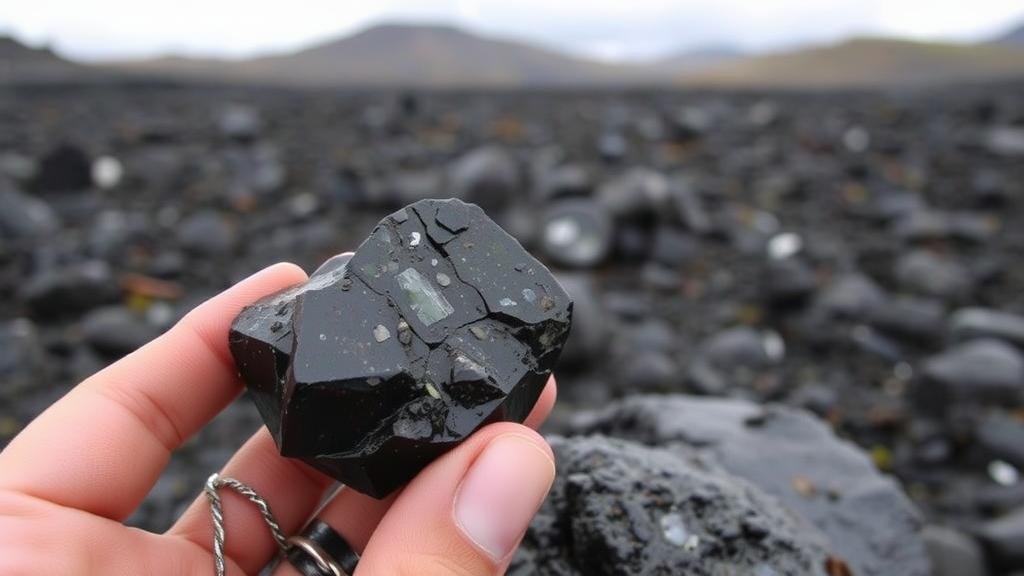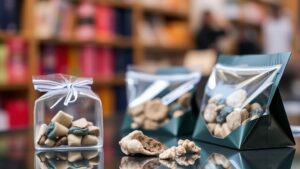Searching for volcanic glass obsidian in the lava fields of Iceland.
Searching for Volcanic Glass Obsidian in the Lava Fields of Iceland
Iceland is renowned for its breathtaking landscapes shaped by volcanic activity, making it a prime destination for rockhounds and mineral collectors. Among the treasures found within its rugged terrain is obsidian, a naturally occurring volcanic glass. This article explores the fascinating process of finding obsidian in Iceland, including where to look, what to look for, and tips for responsible collecting.
The Science Behind Obsidian
Obsidian is formed when molten lava cools rapidly, preventing the formation of crystals. Its glassy texture and sharp edges make it a favorite material not only for collectors but also for ancient tool-making. Typically, obsidian is found in a range of colors, including black, mahogany, and rainbow, depending on the presence of various impurities and gas bubbles. In Iceland, the most common type is black obsidian, which exhibits a shiny, glass-like surface.
Best Locations to Find Obsidian in Iceland
Icelands lava fields are sprinkled with obsidian deposits, particularly in areas with recent volcanic activity. Some of the prime spots include:
- Askja Caldera: This area offers stunning landscapes with abundant glassy flows.
- Holuhraun Lava Field: Formed after the 2014-2015 volcanic eruption, its one of the best sites to discover fresh obsidian.
- Snæfellsnes Peninsula: Known for its diverse geology, this region also has obsidian available in various forms.
When planning a trip, it’s beneficial to check recent volcanic activity and the accessibility of these sites due to weather conditions.
Identifying Quality Obsidian
While searching for obsidian, collectors should be aware of how to identify quality specimens. Here are some characteristics to look for:
- Shiny, glass-like surface that reflects light.
- Sharp edges, indicating a fresh break rather than weathered pieces.
- Unique color patterns, which can include swirls or flecks of color.
Keep in mind that while some obsidian might appear similar to common rocks, its weight will generally be heavier due to its composition. For example, obsidian often weighs around 2.5 grams per cubic centimeter, compared to typical volcanic rock weighing approximately 1.6 grams per cubic centimeter.
Practical Tips for Collectors
Successful obsidian hunting requires preparation and respect for the environment. Here are some practical tips:
- Wear sturdy footwear: The terrain can be rough and uneven, making hiking boots essential.
- Use a sturdy backpack: Carry essential gear such as water, first aid supplies, and tools for collecting.
- Follow local regulations: Be aware of and respect guidelines about collecting in protected areas.
Also, be mindful of your impact on the environment. Always avoid disturbing ecosystems or collecting in areas where it could cause environmental harm.
Real-World Applications of Obsidian
The practical uses of obsidian extend beyond mere collection. Historically, obsidian has been utilized for making tools, blades, and even surgical instruments due to its ability to achieve a razor-sharp edge. In modern times, it is also used in the production of jewelry and decorative pieces, reflecting its aesthetic appeal.
Conclusion: A Treasure Hunt in Iceland
Searching for volcanic glass obsidian in the lava fields of Iceland offers rockhounds a unique opportunity to experience the beauty of nature while enhancing their mineral collections. By understanding where to look and how to identify quality specimens, collectors can enjoy a fulfilling adventure. Always remember to collect responsibly, ensuring that future generations can also enjoy the wonders that Iceland’s geology has to offer.
If you are planning your next mineral-hunting expedition, consider your trip to Iceland. With the right preparation, you are bound to uncover the fascinating volcanic glass that is obsidian.



